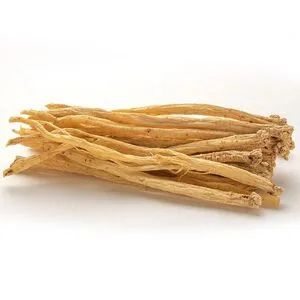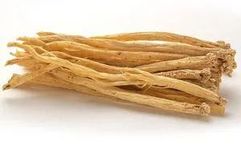Dang Shen (Codonopsis pilosula) is a medicinal herb that shares the same origin as food, known for its excellent ability to tonify Qi and blood. Nowadays, many people recognize the benefits of this herb and often add it to nourishing soups. Dang Shen has a pleasant taste, effective properties, and is safe for consumption, making it popular among the public.
Characteristics of the Herb:
Dang Shen: It is long and cylindrical, slightly curved, measuring 10 to 35 cm in length and 0.4 to 2 cm in diameter. The surface is grayish-yellow, yellow-brown to gray-brown, with numerous warty protrusions at the root’s head and buds. Each stem scar has a concave round dot at the top; below the root head, there are dense ring-like transverse wrinkles that gradually become sparse downward, some reaching half the total length. Cultivated varieties have fewer or no ring-like transverse wrinkles. The entire herb has longitudinal wrinkles and scattered transverse lenticel-like protrusions, and the broken root often has black-brown gelatinous material. The texture is slightly soft or slightly hard with some toughness, the cross-section is slightly flat, with cracks or radial patterns, the bark is light brown to yellow-brown, and the wood is light yellow to yellow. It has a special aroma and a slightly sweet taste.
Su Hua Dang Shen (Western Codonopsis): Length 10 to 35 cm, diameter 0.5 to 2.5 cm. The surface is yellowish-white to grayish-yellow, with dense ring-like transverse wrinkles often exceeding half the total length. The cross-section has more cracks, with the bark being grayish-white to light brown.
Chuan Dang Shen: Length 10 to 45 cm, diameter 0.5 to 2 cm. The surface is grayish-yellow to yellow-brown, with obvious irregular longitudinal grooves. The texture is softer yet firm, with fewer cracks in the cross-section, and the bark is yellowish-white.
Taste and Meridian Affinity:
Sweet, neutral. It enters the Spleen and Lung meridians.
Functions and Indications:
It strengthens the Spleen and benefits the Lungs, nourishes blood and generates fluids. It is used for Spleen and Lung Qi deficiency, poor appetite, fatigue, cough with shortness of breath, insufficient Qi and blood, pale complexion, palpitations, shortness of breath, thirst due to fluid damage, and internal heat leading to thirst.
Growth Environment:
It prefers a mild and cool climate, is cold-resistant, and can survive winter outdoors with its roots exposed in the soil. Seedlings prefer moist, shaded conditions and are sensitive to strong light. Lack of water after sowing makes it difficult for seedlings to emerge, and water shortage after emergence can lead to mass death. High temperatures can cause root rot. Mature plants prefer abundant sunlight. It is suitable for cultivation in deep, well-drained, loose sandy loam rich in humus.
Distribution:
Dang Shen is rich in resources and widely distributed, growing in mountainous forest edges and thickets at altitudes of 1560 to 3100 meters. According to the Flora of China, there are over 40 species in the Codonopsis genus, distributed in East and Central Asia, with about 39 species found in China, occurring nationwide. Based on origin, characteristics, and processing methods, Dang Shen is often classified into commercial specifications such as “Lu Dang,” “Xi Dang,” “Dong Dang,” and “Tiao Dang.” Currently, there are also Dang Shen varieties named after specific production areas, with well-known examples including Wen County “Wen Dang,” Feng County “Feng Dang,” Banqiao Town “Ban Dang,” Shanxi “Lu Dang Shen,” “Tai Dang,” and the widely marketed Gansu Dingxi “Bai Tiao Dang,” among others. Notably, “Lu Dang Shen” is produced in the ancient Lu Prefecture of Shanxi (now Changzhi City and Jincheng City) and is a renowned traditional medicinal herb.

Consultation Phone:
Address: Shuangliu District

